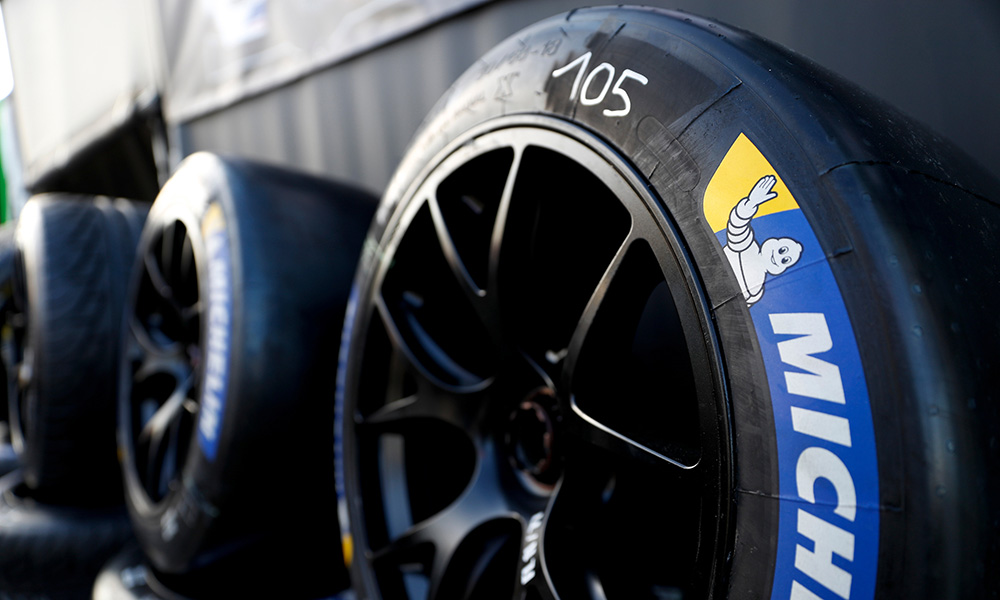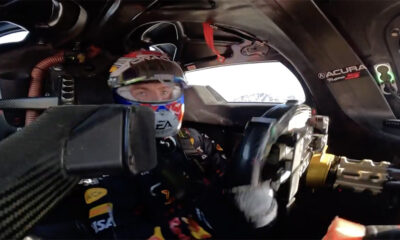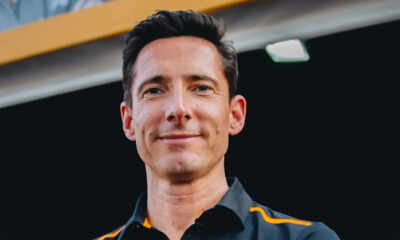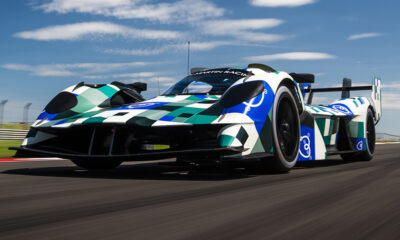
Photo: Mike Levitt/IMSA
Michelin will introduce an all-new tire in the GTD Pro and GTD classes of the IMSA WeatherTech SportsCar Championship next year, with the Pilot Sport Pro GT H1 compound set to provide a step forward in sustainability and performance according to the brand’s WeatherTech Championship series manager.
The French tire manufacturer, which has utilized the Pilot Sport S9M GT since becoming the exclusive tire provider in 2019, has taken the lessons learned in the five years of competition to roll out a new design.
“This is the first time since 2019 that we’ve introduced a new tire into an existing class,” said Michelin’s Taylor Jenkins, whose focus is on the GTD Pro and GTD classes. “You can think GTP came along and that was a new tire but that was also a new class and new cars.
“It’s really exciting. It’s been great to work with all of the OEMs and all of the teams that have tested.
“I think it also speaks volumes of the S9M in that it’s been quite a robust tire since 2019 and even before that, it’s been in our commercial catalog for quite some time.
“The Pilot Sport Pro will really represent a step forward in performance and sustainability in all of the criteria.”
Having been in development for several years, Jenkins said testing with the tire began in Europe before being rolled out in the U.S. in May for on-track sessions with selected teams.
A multi-day tire test following the Sahlen’s Six Hours of The Glen in June, however, offered the first significant opportunity for GTD Pro and GTD manufacturers and teams to get their hands on Michelin’s latest offering.
“We invited every OEM to stay the Monday after Watkins Glen and provided every OEM an opportunity to really discover the tires there,” Jenkins explained.
“That was a great test for a lot of the OEMs. They were excited to see the tire, get on the tire and they’re all excited to do some off-season testing between now and the Roar.”
Jenkins explained that the new tire’s inspiration has come from Michelin’s GTE-specification confidential tires but packaged as an off-the-shelf commercially available tire.
“It’s a construction more similar to [GTE],” he said.
“The three pillars we’re focused on is the consistent performance, which is performance over a stint or a stint-plus, drivability, both on the professional side but also on the Bronze and Silver side, and warmup, which is also a big key.
“One thing we do in GT racing here in the U.S. is use one tire for the entire season.
“If you think about what that means, it’s track temperatures in the middle of the night at Daytona at 40 degrees Fahrenheit, all the way to what we see at Watkins Glen, 130 degrees, sometimes we see in the middle of the summer.
“We’ve focused on warmup but not giving up any performance. I think that was something we’ve certainly saw in the testing at Watkins Glen this summer.”
Testing has been conducted on a number of tracks in the U.S. and in Europe, with the tire earmarked for “premium championships” around the world, but January’s Rolex 24 at Daytona will serve as the global launch event for the Pilot Sport Pro.
“For us, Watkins Glen is the real test,” Jenkins said. “It’s the most high-energy circuit, plus the thermal side of things with the track temperature.
“I don’t want to say that if you can survive Watkins Glen, you can survive anything but it’s a really great place to test tires.
“We felt really good leaving that test with nine OEMs all with positive comments.”
Jenkins said the Pilot Sport Pro has been built with sustainability and performance in mind, with IMSA and Michelin set to reduce tire allocations by nearly 20 percent in the 2024 season.
It could lead to new strategies being played in the GT ranks.
“Do we expect double stints everywhere we go? I would say no,” Jenkins said. “Do we anticipate different strategies like double stint the left-side tires at Daytona? Absolutely.
“Can you double stint the right-side tires at Daytona? I’m not sure and I’m not certain if it gains you [time].
“If the degradation outweighs the tire change, then you just won’t do it. There’s some sporting side of things that I think is still to be determined.
“But absolutely, extended stint is what we’re after. It doesn’t mean double stint everywhere, it means some strategy in the teams.”






















